After sleeping soundly in our comfortable beds at Croft Mill we prepared breakfast from the generous hamper that had been left for us, feasting on organic muesli with strawberries and grapes, free range eggs and wholemeal crusty bread.
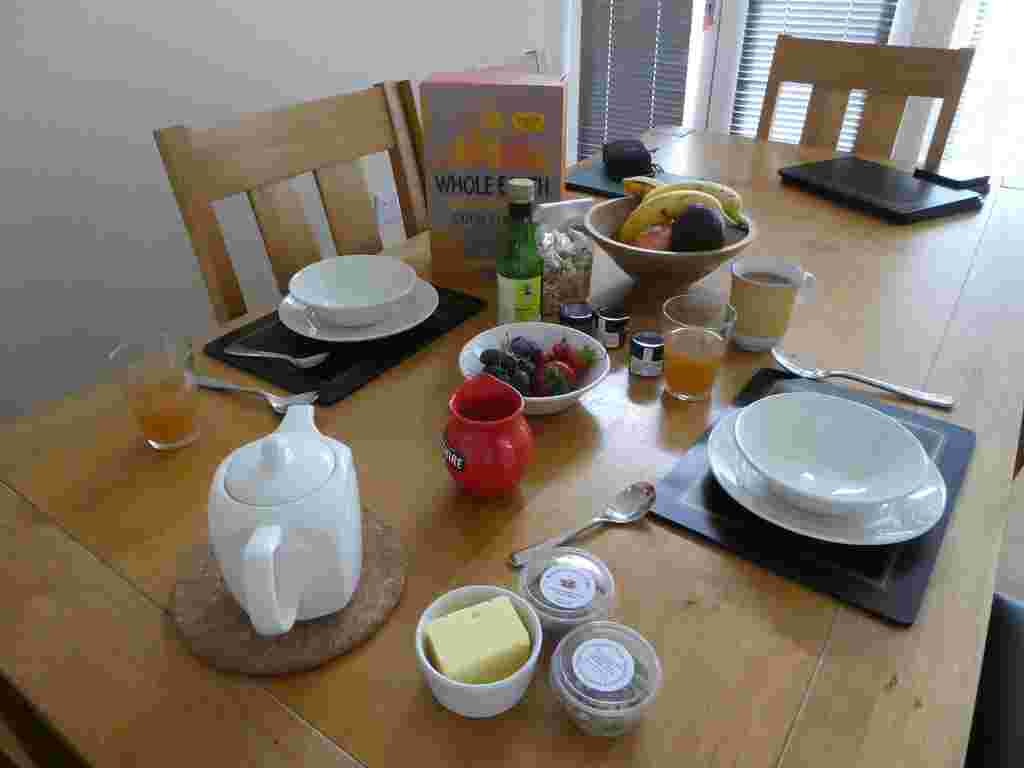
It was again another bright, sunny morning as we set out to explore the idyllic small town of Hebden Bridge. Our accommodation couldn’t have been better placed as it is located in a quiet corner of the town centre. The town sits on both the River Calder and the Rochdale Canal in the steep sided Upper Calder Valley.
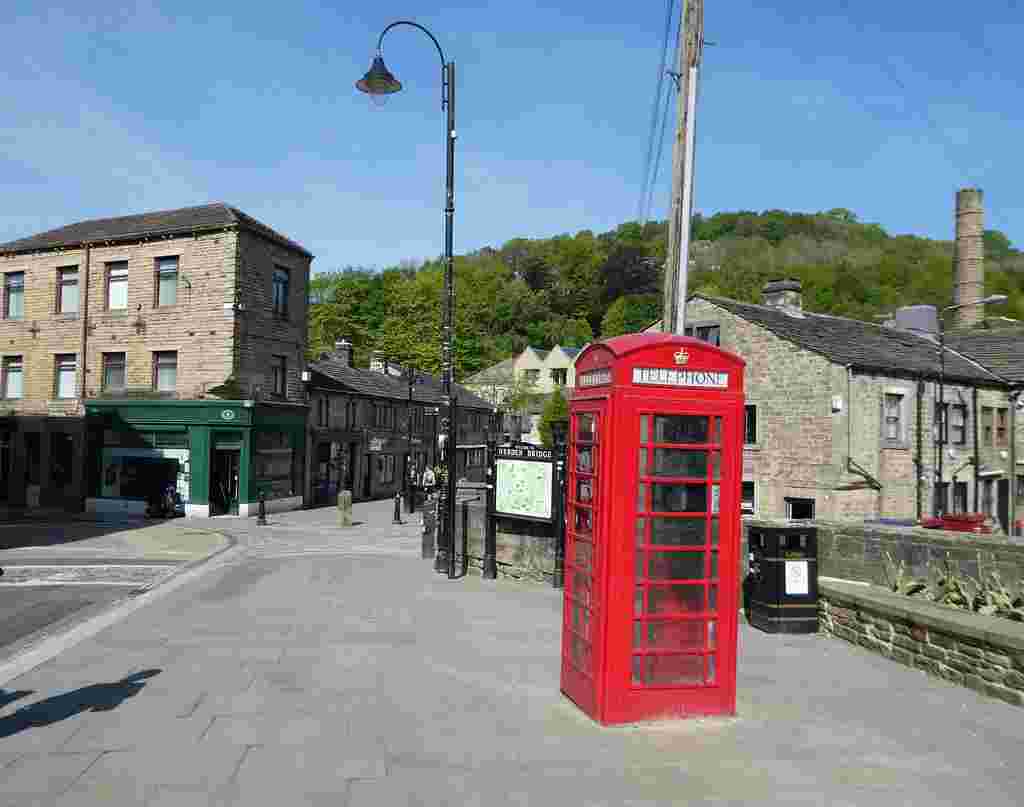
Leaving Croft Mill it was a delight to wander along the narrow streets of this former textile town which has been home to those seeking a bohemian lifestyle for many years. Since the 1970’s a large influx of creative people have come to live and work in the town encouraged to do so by the cheap housing at that time. Old mills have now been converted into artisan workshops with vegetarian, vegan food outlets and cafes flourishing everywhere.
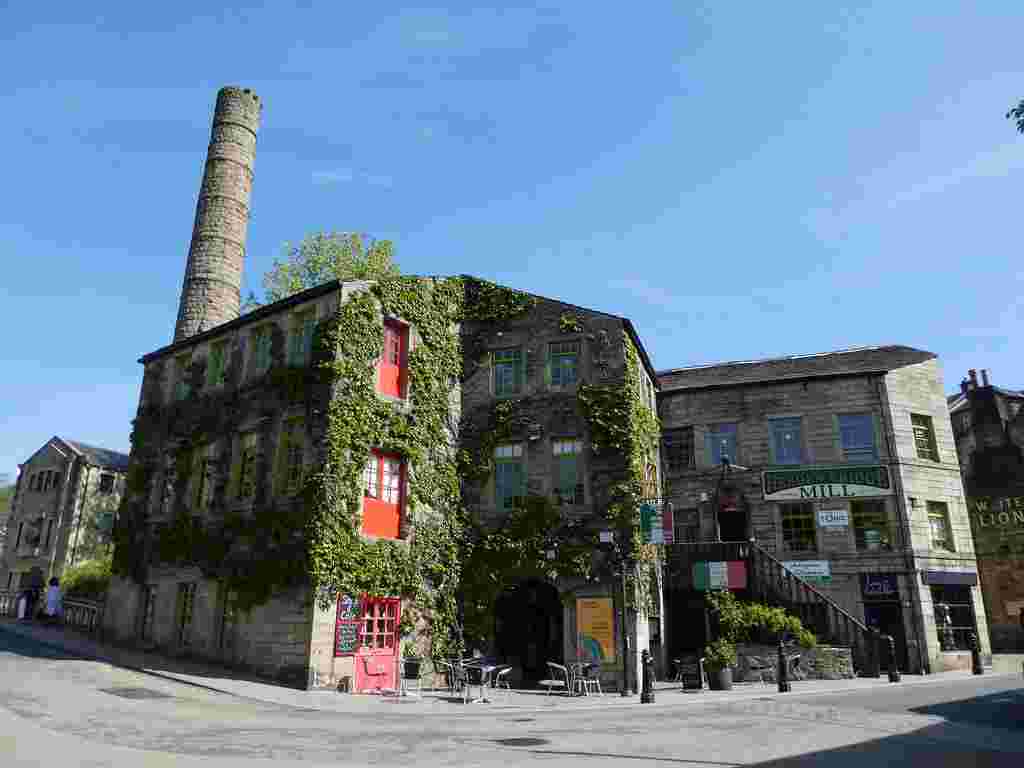
Hebden Bridge recently celebrated 500 years of creativity and continues today to live up to its reputation, with many of its residents being writers, sculptors and artists. There’s hardly a high street name to be found, instead the town’s many stone fronted small shops are home to quirky, independent retailers and galleries making it a pleasure to look around. This makes shopping much more interesting as usually it’s the same high street names that crop up in every town in the country with the small independent’s being in the minority.
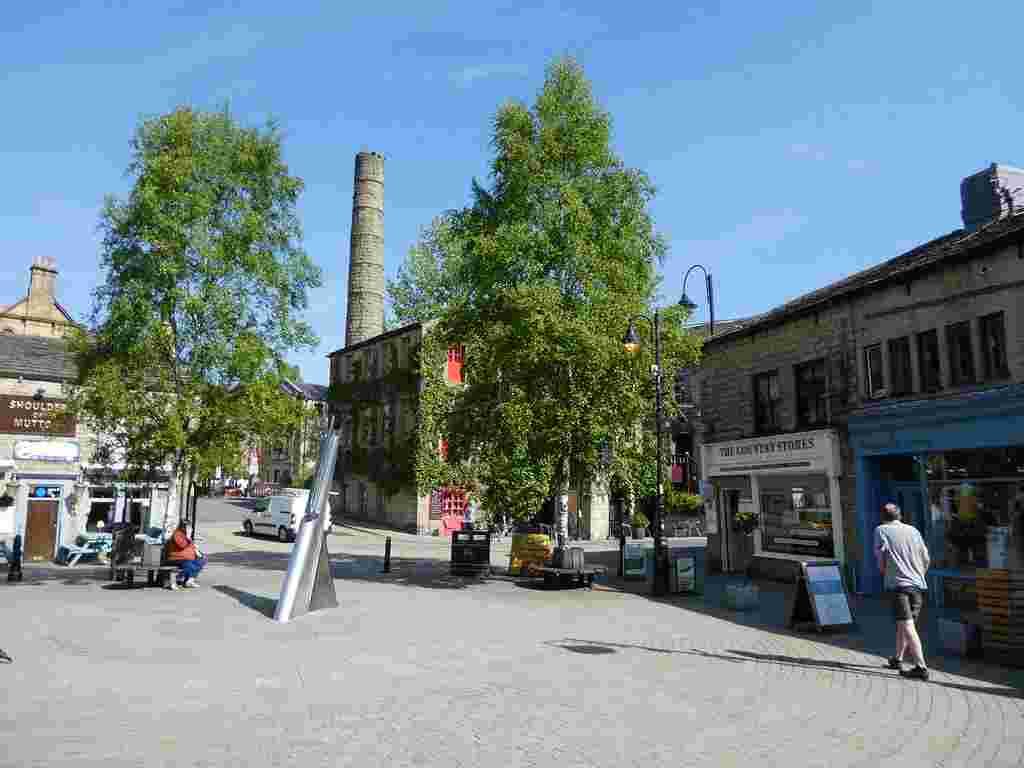
At the heart of the town lies the pedestrianised St. George’s Square surrounded by small cafes and shops. It’s centrepiece is a Fustian knife sundial sculpture in celebration of the thick, hard wearing cloth that the town became famous for.
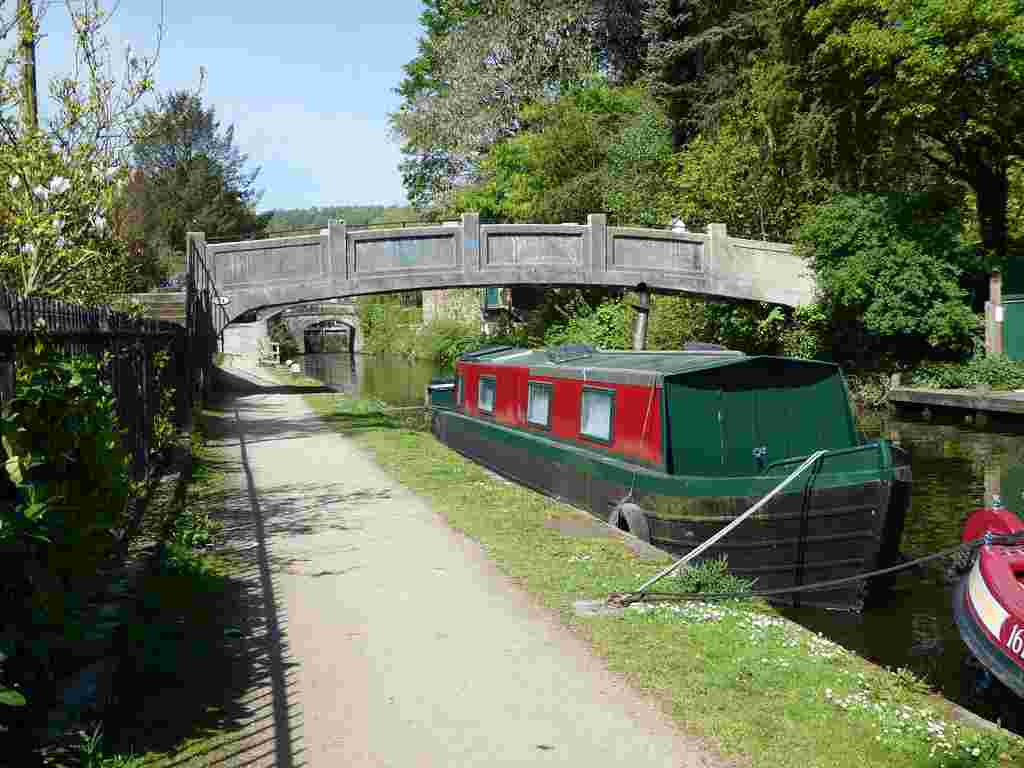
Our morning stroll continued along the towpath of the Rochdale canal which runs from nearby Sowerby Bridge to Manchester. Strolling along the canal bank we had good views of some unusual tall stone houses clinging to the hillsides. These are known as ‘over under dwellings’ which I had never encountered anywhere else, the upper side of the house faces uphill while the lower side opens onto a different street facing downhill.
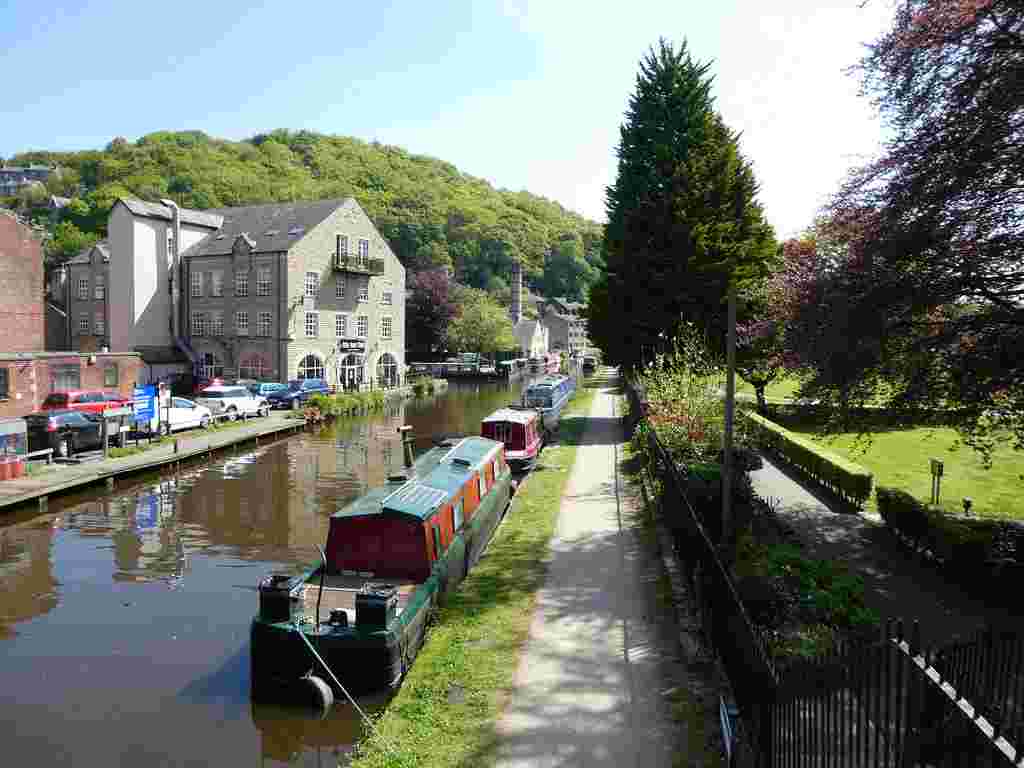
I adore waterside walks and along the towpath between the Blackpit and Mayroyd Locks was as good as it gets. Brightly painted narrowboats slowly chugged along, their occupants having time to exchange pleasantries and give us a wave. On our right hand side was the lovely Calder Holmes Park and to our left we admired the marina and canal basin, the starting point for cruise trips. It was such a pity that they weren’t operating that day as the weather was beautiful and we would have jumped at the chance.
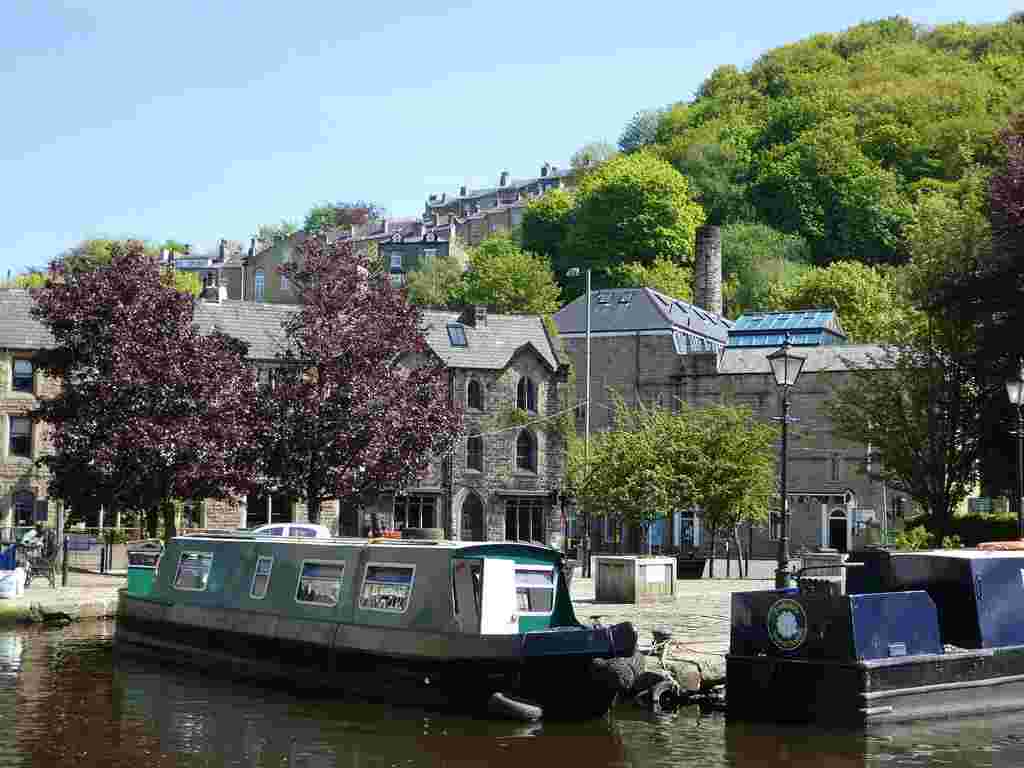
Continuing past the railway station we noticed that some of the moorings were occupied by houseboats, their washing drying in the breeze and vegetables growing in wooden troughs on the edge of the towpath.
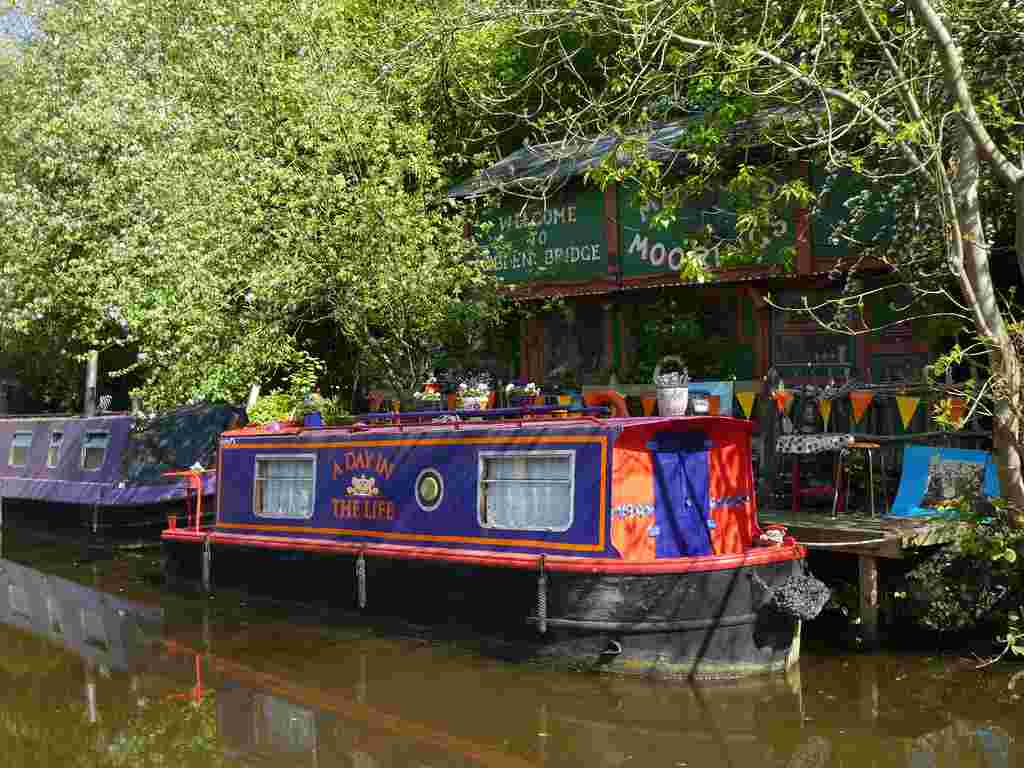
On our way back into town we made a short detour to take a look at the station which was well kept and looked endearing with its old fashioned platform signs. I had recently read a book featuring Britain’s 100 best railway stations and had noted that Hebden Bridge was included on the list.
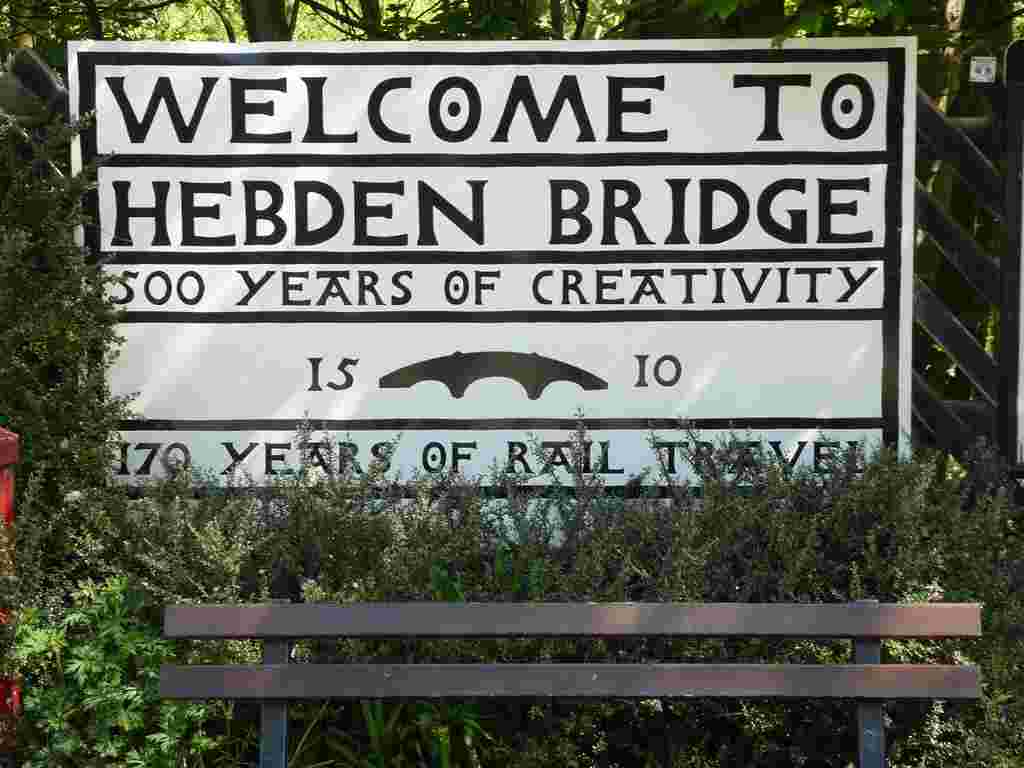
Back at our apartment we prepared a light lunch then jumped in the car for a return visit to nearby Halifax as we hadn’t had time to visit all its attractions the previous day. First on our list was a visit to The Bankfield Museum in Akroyd Park, a conservation area on the outskirts of the town. Both parking and museum admission are free and entrance is via its original magnificent staircase.
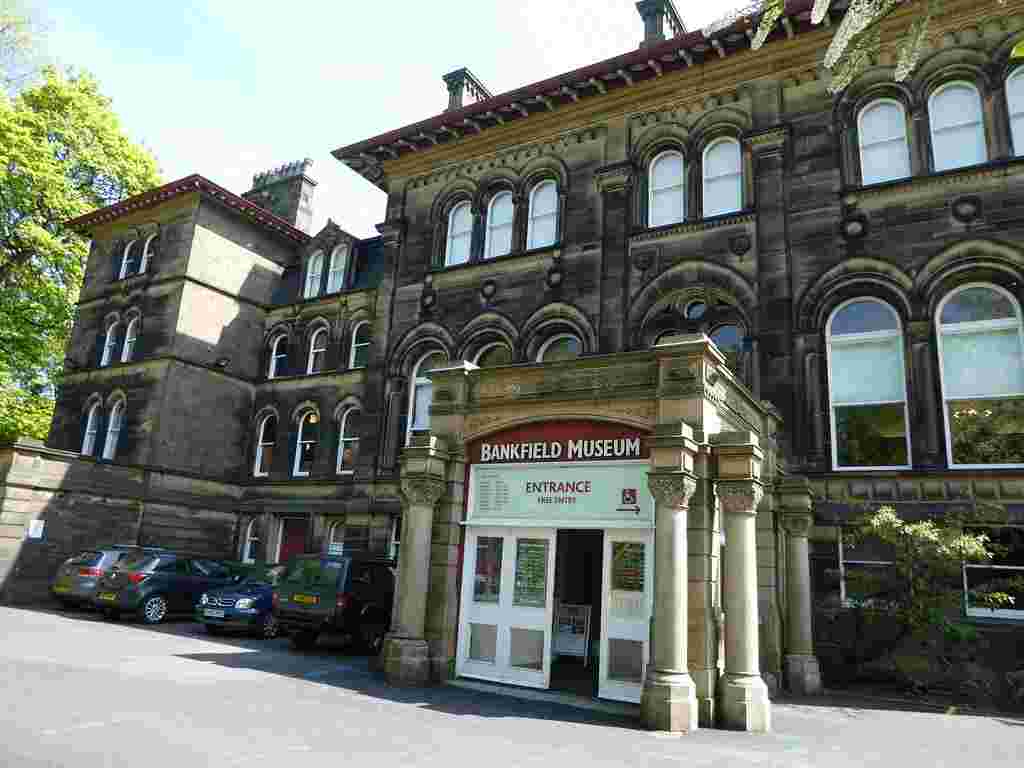
The museum’s permanent collection documents local history and the town’s world dominance as the centre of the woollen trade. Two temporary exhibitions were taking place, one on fashion and the other entitled ‘Women Traveller’s’ highlighting the lives of four women, the journey’s they took, the objects they collected and the people they met. One of them was Anne Lister who is the subject of the BBC period drama ‘Gentleman Jack’ and whose home we visited the previous day at nearby Shibden Hall.

A short drive into the town centre followed as we wanted to take a look in Halifax Minster formerly a parish church until ten years ago. The Minster was built 900 years ago by Benedictine monks and has some wonderful painted ceiling panels, medieval stained glass windows and Jacobean box pews.

The exquisite font also dates from medieval times and is acknowledged to be one of the finest in the country with its over hanging canopy. There were some friendly volunteers on hand to answer any questions we might have and to point out key features. I would recommend including a visit to the Minster as it is only a few minutes walk from the magnificent Piece Hall.
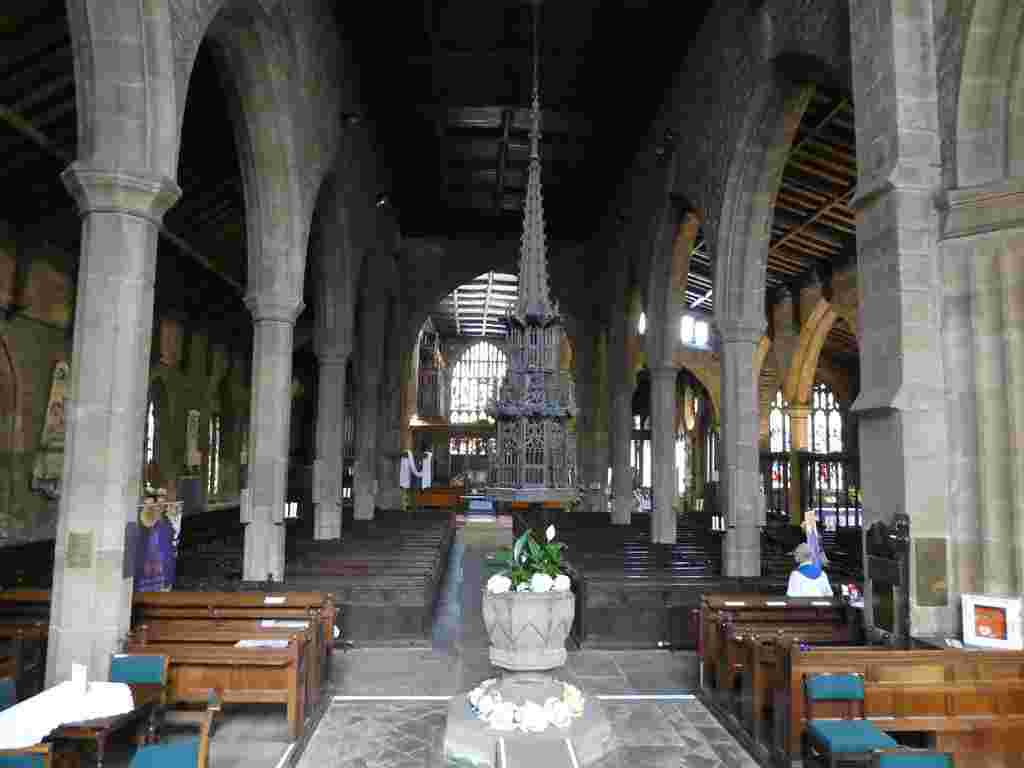
Back in our stylish apartment we relaxed awhile enjoying the early evening sunshine on our balcony. A little later we hopped back in the car to make the short journey to Sowerby Bridge where the Rochdale canal and the Calder and Hebble Navigation meet. The town is renowned for its lively canal side wharf where we were able to find a parking spot and start exploring.
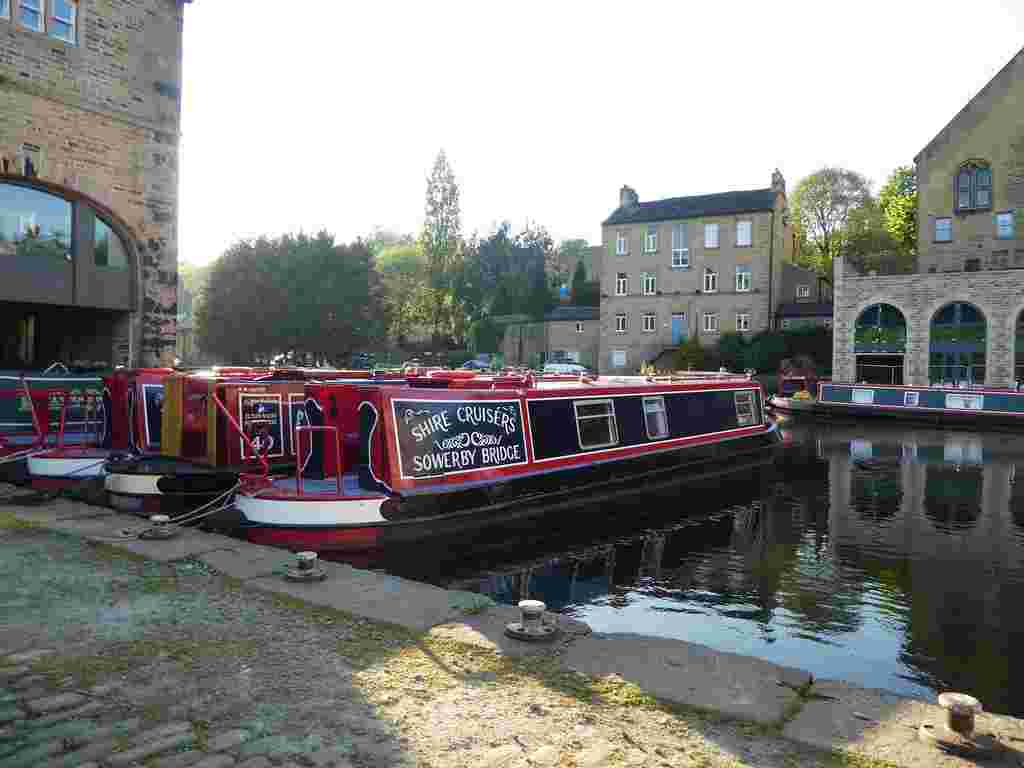
In the soft evening light the canal looked so beautiful as we sauntered along the towpath from the lock to the canal basin. The once derelict canal wharf is now a thriving area with cafes, restaurants, a pub and colourful narrowboats.
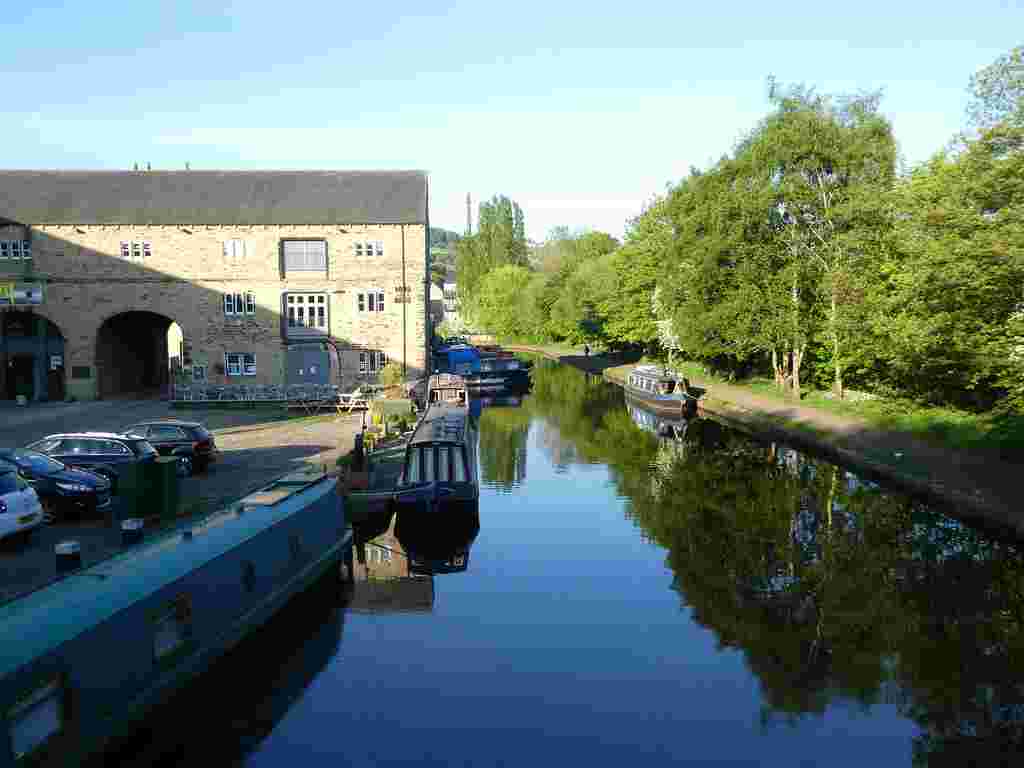
The 200 year old buildings have been restored and are popular with locals and tourists alike. The Calder and Hebble Navigation runs from Wakefield to Sowerby Bridge, a distance of 21 miles with 27 locks making the wharf an ideal starting point for canal boat holidays.
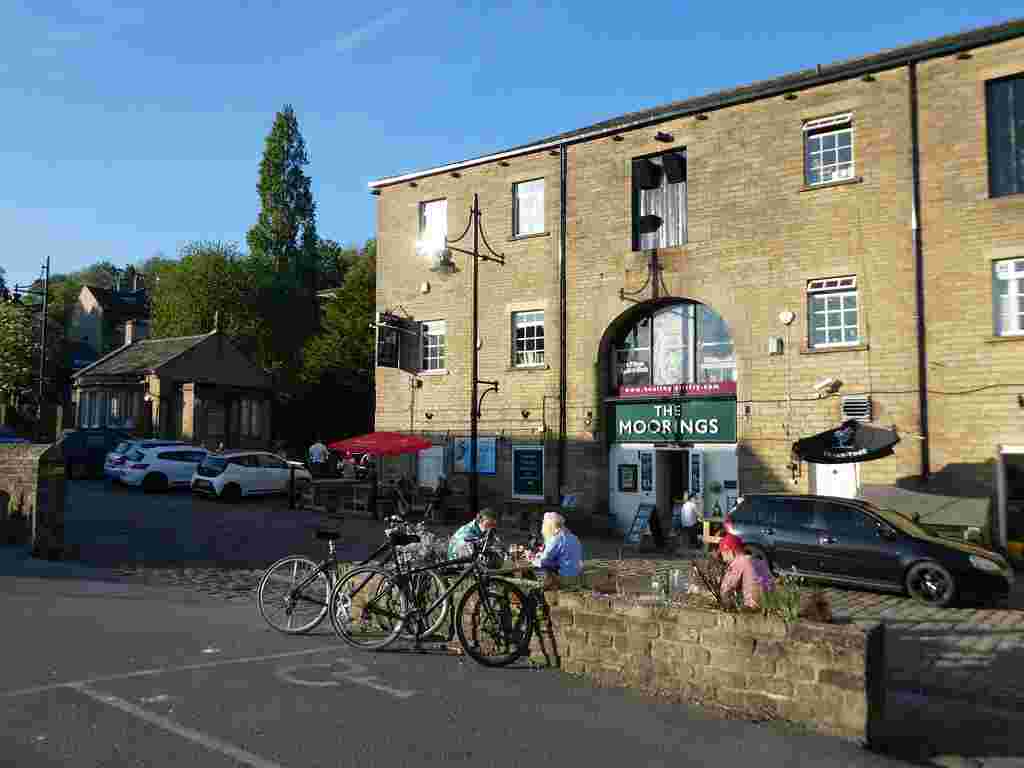
We enjoyed a very relaxing evening dining out in Sowerby Bridge soaking up the vibrant waterside atmosphere. The end of another fun filled day in the South Pennines.
If you have enjoyed reading this post you may also be interested in the following:
Other posts in this series:
Three days in Hebden Bridge, Calderdale
Similar posts:
Exploring the National Science & Media Museum in Bradford
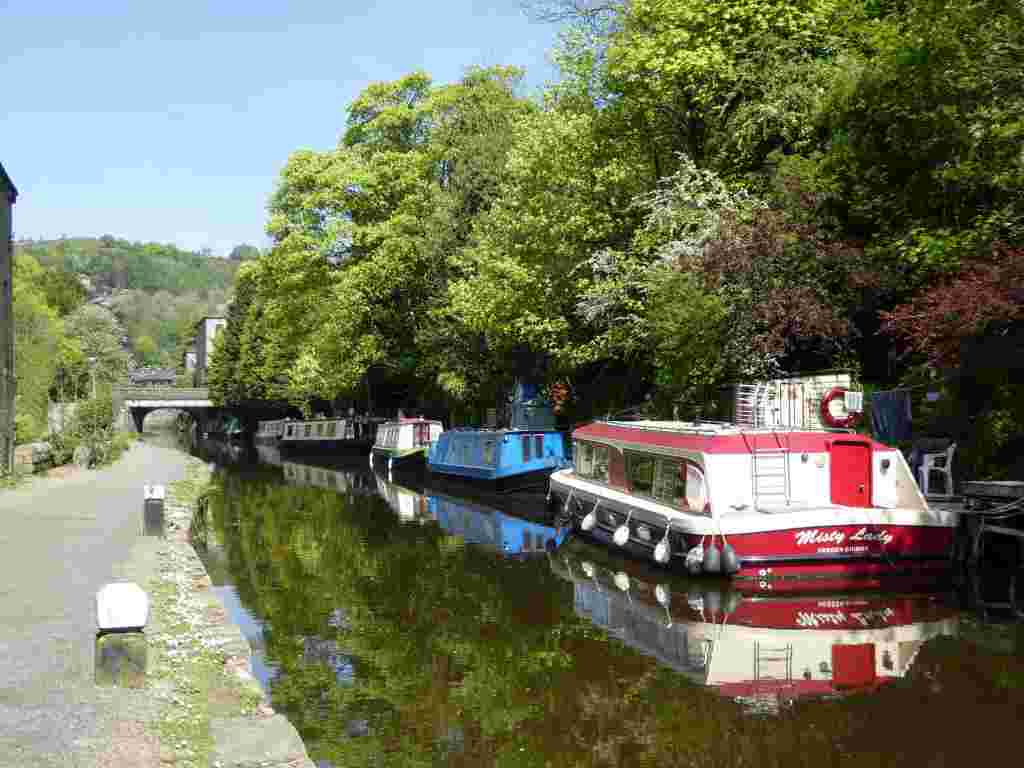

Leave a comment